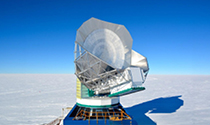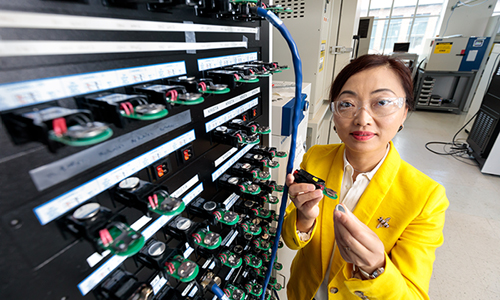|
|
|
|
|
|
| |
The biggest medical monsters—conditions like heart disease, cancer, and autoimmune disorders—are persistent and devastating. Bolstered by the interdisciplinary approach of UChicago scientists, unique partnerships built within and beyond the University are leading to discoveries that make patients’ everyday lives better. |
|
| |
|
|
|
| |
Bringing “firepower” to the cancer fight |
|
| |
|
|
|
|
|
| |
| |
|
|
| |
Kunle Odunsi, director of the University of Chicago Medicine Comprehensive Cancer Center since 2021. Photography by Jason Smith. |
|
| |
|
|
|
|
| |
|
|
|
| |
Kunle Odunsi’s dedication to cancer care began nearly 40 years ago, when he was inspired by the resilience of his first oncology patients in his native Nigeria—and he hasn’t stopped helping since. He joined UChicago in 2021 to direct the UChicago Medicine Comprehensive Cancer Center, bringing his specialization in gynecological cancers and expertise in immunotherapy. Odunsi sees the “intellectual firepower” of collaborations across the University as key to making impactful breakthroughs in cancer treatment. |
|
| |
|
|
|
|
|
| |
Designing the treatments of tomorrow |
|
| |
|
|
|
| |
|
|
|
| Liquid gold: Liquid biopsies can detect cancer DNA via a blood test instead of an invasive surgical biopsy. This diagnostic tool improves the precision and treatment speed for patients with certain types of cancer. |
|
|
|
| |
|
|
|
|
|
| |
|
|
|
| Award-winning array: The Pritzker School of Molecular Engineering’s Nicolas Chevrier won the inaugural Lavichant Faculty Innovation Award—and funding for tests to show proof of concept—for his cell-mapping platform, Array-seq. An improvement over existing platforms, it offers a detailed map of tissue samples to aid in diagnostics and treatment for diseases. |
|
|
|
| |
|
|
|
|
|
| |
|
|
|
| Brighter, lighter future: Light-powered and thinner than a human hair, a new pacemaker prototype could regulate heartbeats and even neural activity without the complications of a traditional pacemaker. |
|
|
|
| |
|
|
|
|
|
| |
Success against sickle cell |
|
| |
|
|
|
|
|
| |
| |
|
|
| |
Lyric Porter, 27, is the third patient in the world to receive a novel stem cell gene therapy to treat her sickle cell disease. |
|
| |
|
|
|
|
| |
|
|
|
| |
A pioneering treatment for sickle cell disease has its third successful patient in Lyric Porter, 27, after she received a trial run of gene therapy at UChicago Medicine Comer Children’s Hospital. The novel therapy modifies the patient’s stem cells to produce normal hemoglobin that does not warp red blood cells into the “sickle” shape for which the disease is named. |
|
| |
|
|
|
| |
The therapy reduces painful disease complications and could “become a bona fide treatment option” for others with this debilitating, lifelong condition, says James LaBelle, the director of Comer Children’s Pediatric Stem Cell and Cellular Therapy program and primary investigator of the clinical trial. “These are very exciting times.” |
|
| |
|
|
|
|
|
| |
Want to learn more? An Alumni Weekend talk by molecular engineering professor Aaron Esser-Kahn, titled “The Challenge of Making Every Vaccine Better—Engineering the Immune System,” will feature the latest in immunological engineering and its possibilities for the future. |
|
| |
|
|
|
|
|
|
|
|
|
|
|
|
|
| |
| |
Sign up to receive µChicago monthly. |
|
|
|
| |
|
|
|
|





